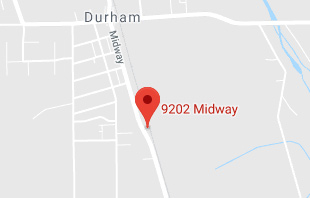Control of mosquitoes in their larval stages is the backbone of most mosquito control programs in California. Larvicides are products used to reduce immature mosquito populations when they are still in the water. Larvicides, which can be biological or chemical, are applied directly to water sources that hold mosquito eggs and larvae. When used well, larvicides can help to reduce the overall mosquito population by limiting the number of new mosquitoes produced.
Adulticides are products that rapidly reduce adult mosquito populations. This can become necessary when larval control measures are insufficient or not feasible. Adulticiding may be initiated when there is evidence of significant West Nile Virus transmission in a region. The most common method of adulticiding is ultra-low volume (ULV) spraying. ULV spraying is the process of putting very small amounts of liquid into the air as a fine mist of droplets. These droplets float on the air currents and quickly eliminate mosquitoes that come into contact with them. ULV adulticides are applied when mosquitoes are most active-typically early evening or pre-dawn. They can be applied from hand-held sprayers, truck-mounted sprayers or airplanes. Adulticides immediately reduce the number of adult mosquitoes in an area, with the goal of reducing the number of mosquitoes that can bite people and possibly transmit West Nile virus.
No. The pesticides we use target a variety of mosquitoes than can transmit West Nile virus as well as other diseases. Mosquito adulticiding is the only method of reducing the number adult mosquitoes in the environment that have already been infected with West Nile virus or other mosquito-borne diseases. This is also the most effective method for controlling the western treehole mosquito, which spreads canine heartworm.
The spraying will take place in areas of concern, as determined by our mosquito and disease surveillance programs. Our trained and certified technicians use a variety of surveillance techniques and treatment criteria to ensure effective mosquito control with the least amount of risk to our residents and our environment.
The risks to the public and to the environment are very low. Mosquito adulticides are applied as ultra-low volume (ULV) sprays. ULV applications involve small quantities of active ingredient in relation to the size of the area treated, typically less than one ounce per acre, which minimizes exposure and risk to people and the environment. This small amount of spray quickly dissipates and is broken down into inert components by exposure to sunlight.
When necessary, our District may use application of pesticides to kill mosquitoes that pose a health risk to the residents of Shasta Mosquito & Vector Control District. In the case of adulticiding, or targeting adult mosquitoes, we would use botanical insecticides (plant derived compounds) or synthetic versions of, that include pyrethrins and synthetic pyrethroids, as well as piperonyl butoxide. In rare instances, we may use malathion. All of the products we use are registered with the Environmental Protection Agency and applied according to label directions by our trained and certified technicians. Click here for more information on pesticides used in adult mosquito control.
The risks to the public and to the environment are very low. Mosquito adulticides are applied as ultra-low volume (ULV) sprays. ULV applications involve small quantities of active ingredient in relation to the size of the area treated, typically one ounce or less per acre, which minimizes exposure and risk to people and the environment. Most applications take place between 3:00 and 6:00 A.M., which virtually eliminates exposure of the public to our mosquito control products. This small amount of spray quickly dissipates and is broken down into inert components by exposure to sunlight.
Chemical control measures are one part of a comprehensive and integrated mosquito management program. An integrated program is the most effective way to prevent and control mosquito-borne disease. An integrated mosquito management program should include several components: surveillance (monitoring levels of mosquito activity, and where virus transmission is occurring), (2) reduction of mosquito breeding sites, (3) community outreach and public education, and (4) the ability to use chemical and biological methods to control both mosquito larvae and adult mosquitoes. CDC’s Revised Guidelines for Surveillance, Prevention, and Control of West Nile Virus in the US, 2003 [254 KB, 77 pp].) provides detailed guidance about the use of control measures, including suggestions for a phased response and the actions that are possible at different levels of virus activity.
Reducing the adult mosquito population with pesticides (adulticides) approved by the US Environmental Protection Agency (EPA) will be done if necessary to prevent human illness or to suppress a heavy nuisance infestation of mosquitoes. The decision to spray by truck-mounted sprayers will be based on surveillance information or the documentation of West Nile virus activity at a level that indicates a threat to human health. Spraying will be concentrated in areas most at risk for disease occurrence and will be conducted by certified and licensed applicators. The District’s aggressive campaign against mosquito larvae is intended to minimize the need to use adulticides.
Generally, there is no need to relocate during mosquito control spraying. The pesticides have been evaluated for this use and found to pose minimal risks to human health and the environment when used according to label directions.

